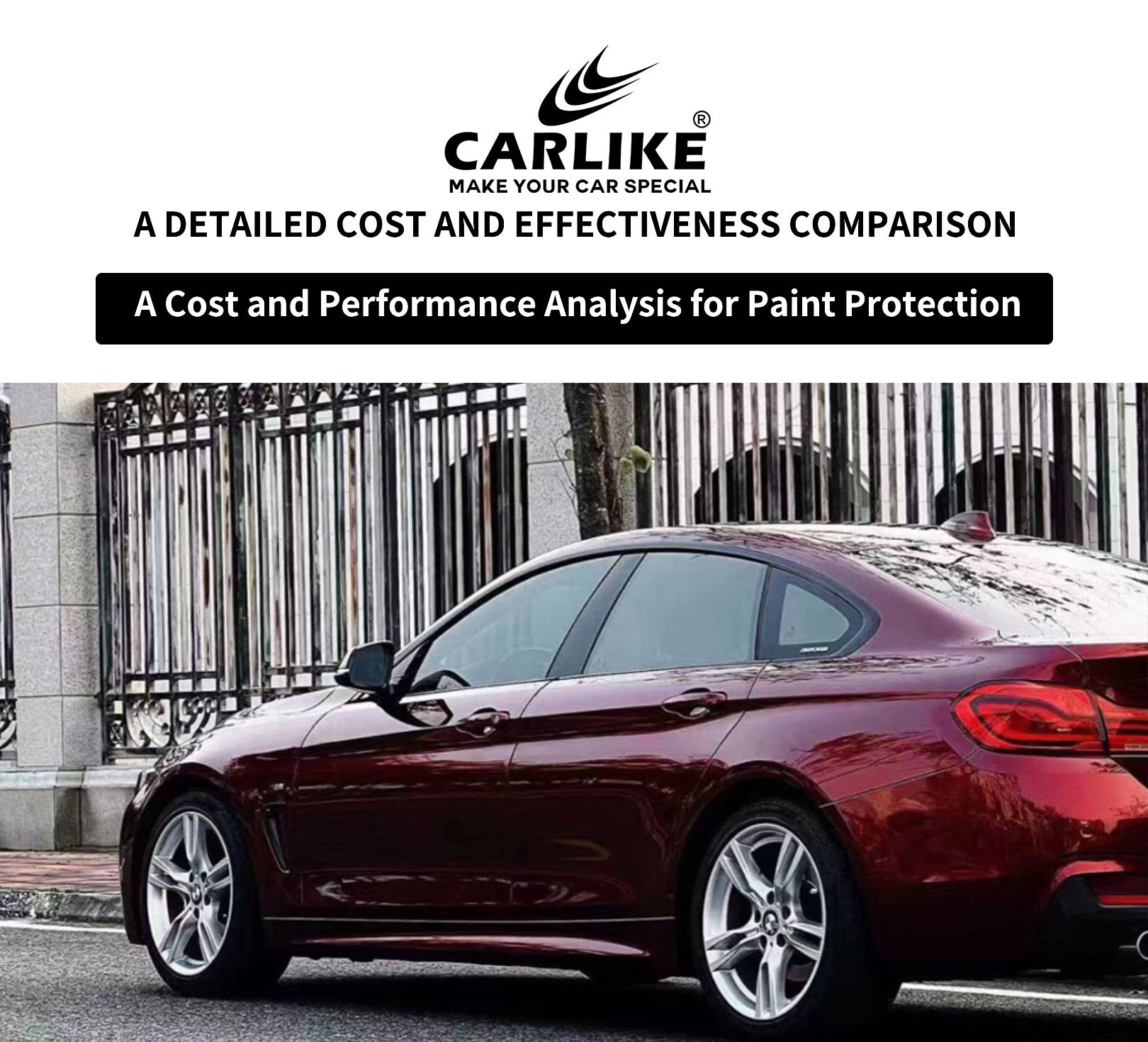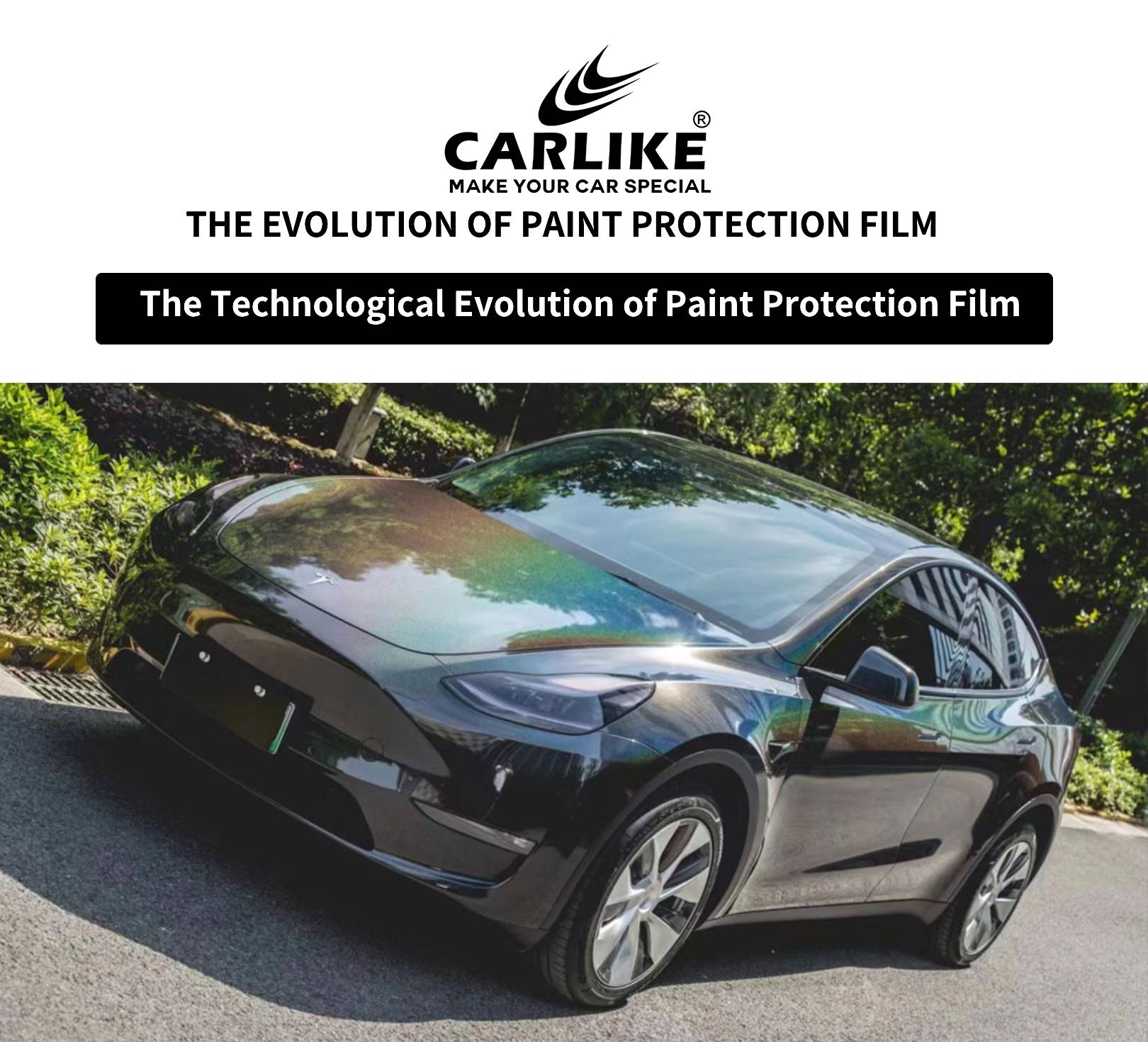CARLIKE-Make Your Car Special.

TPU PPF, TPH PPF Car Paint Protection Film. Paint protection is a must for anyone who truly cares about the appearance of their vehicle. Every car owner knows that you have to install car paint protection film if you want to keep your vehicle looking as good as the day you bought it.
How Does PPF Protect My Car?
When you add a clear protection film on your car, you create a protective barrier that keeps the damage away from the paint. That thick layer of polyurethane absorbs the damage. Here’s the best part, though — the self-healing paint protection film won’t show minor damage. Scratches disappear and chips fill in.
Factors Influencing the Cost of Paint Protection Film
Material Quality
- Premium Quality Films: These are usually thicker, more durable, and offer better protection against UV rays, scratches, and impacts. Examples include brands like XPEL Ultimate and 3M Scotchgard Pro. They typically come with longer warranties.
- Standard Quality Films: These offer decent protection but may not last as long or provide as comprehensive a protection as premium films. Brands like SunTek and Llumar provide quality options at a lower price point.
Coverage Area
- Partial Coverage: Protects high-impact areas such as the front bumper, hood, side mirrors, and headlights. This option is less expensive and covers the most vulnerable parts.
- Full Coverage: Protects the entire vehicle, including all painted surfaces. This option is more expensive but provides comprehensive protection.
Installation Costs
- Professional Installation: Hiring a professional ensures a perfect fit and finish, reducing the risk of bubbles or peeling. Professional installers also offer warranties.
- DIY Kits: These are cheaper but require skill and patience. The risk of errors is higher, which can affect the film’s effectiveness and durability.
Vehicle Model and Size
- Larger vehicles like SUVs and trucks require more film and longer installation times, thus increasing costs.
- Luxury and sports cars often have complex shapes and require more precise installation, leading to higher costs.

Maintenance and Longevity: Cost Over Time
Maintenance Costs of Paint Protection Film (PPF)
1. Regular Cleaning
- Frequency: Paint Protection Film needs to be cleaned regularly, typically during routine car washes.
- Cost: Regular car washes can range from $10 to $30 per wash, depending on whether you do it yourself or use a professional service.
- Special Cleaning Products: Paint Protection Film-friendly cleaning solutions are recommended, costing around $10 to $20 per bottle. These are designed to avoid damaging the film.
2. Detailing
- Frequency: Annual or bi-annual professional detailing is often recommended to keep the film in optimal condition.
- Cost: Professional detailing can cost between $100 and $300, depending on the extent of the service and the size of the vehicle.
3. Inspection and Minor Repairs
- Frequency: It's advisable to inspect the film every few months for any minor damages such as lifting edges or small bubbles.
- Cost: Minor repairs can cost from $50 to $200, depending on the damage's severity and location. Some installers offer a warranty that might cover these repairs for a limited period.
4. Warranty and Replacement
- Typical Warranty: Many high-quality Paint Protection Film products come with warranties ranging from 5 to 10 years.
- Warranty Costs: Some warranties may cover defects and yellowing but might exclude physical damage caused by accidents or improper maintenance.
- Replacement Costs: If significant damage occurs outside the warranty, replacing the Paint Protection Film can be costly. Full panel replacements might cost between $500 and $2,000, depending on the vehicle and the extent of coverage.

Durability of Paint Protection Film and Its Impact on Total Cost
1. Durability Factors
- Quality of the Film: Higher quality films generally offer better durability and protection, often lasting up to 10 years.
- Environmental Conditions: Exposure to harsh sunlight, pollutants, and road debris can affect the film’s longevity.
- Driving Habits: Frequent driving on gravel roads or in extreme weather conditions can lead to quicker wear and tear.
2. Long-Term Cost Benefits
- Reduced Paint Damage: Paint Protection Film significantly reduces the likelihood of scratches, chips, and other minor damages to the car’s paint, which can be costly to repair. Paint repairs without PPF can cost several hundred to thousands of dollars.
- Preservation of Vehicle Value: By maintaining the car’s exterior in better condition, PPF helps retain the vehicle’s resale value. A well-maintained exterior can increase the resale value by up to several thousand dollars compared to a vehicle with noticeable paint damage.
- Extended Aesthetic Appeal: PPF helps keep the car looking new for longer, potentially reducing the frequency of needing cosmetic work.
3. Total Cost Over Time
- Initial Investment: The upfront cost of PPF installation ranges from $500 to $5,000, depending on the vehicle and the extent of coverage.
- Maintenance and Repairs: Annual maintenance costs can average between $100 and $500, including cleaning products, detailing, and minor repairs.
- Cost Savings: By preventing paint damage and preserving the vehicle’s exterior, PPF can save hundreds to thousands of dollars in paint repairs and boost resale value.

Is Paint Protection Film a Good Investment for All Vehicles?
When considering whether paint protection film (PPF) is a good investment for your vehicle, it's important to weigh several factors including the type of vehicle, usage, and personal preferences.
1. Type of Vehicle
Luxury and High-End Vehicles
- Benefits: Luxury cars and high-end sports cars often have expensive paint jobs that are worth protecting. PPF can preserve the pristine look, prevent minor damages, and maintain the vehicle's high resale value.
- Investment Justification: Given the high cost of potential repairs and the importance of aesthetics, PPF is generally considered a good investment for these vehicles.
Daily Commuters and Economy Cars
- Benefits: For everyday cars, PPF offers protection against common issues like road debris, bird droppings, and minor scratches.
- Investment Justification: While the resale value increase might not be as significant as with luxury cars, the cost of maintaining the car’s appearance and avoiding frequent paint repairs can justify the investment for some owners.
2. Usage and Driving Conditions
City Driving
- Benefits: In urban environments, cars are more prone to scratches from tight parking spaces, shopping carts, and minor fender benders.
- Investment Justification: The likelihood of minor damages is higher, making PPF a practical investment to avoid frequent touch-ups and maintain aesthetics.
Highway and Long-Distance Driving
- Benefits: Vehicles used for long-distance travel often face road debris, gravel, and insects that can damage the paint.
- Investment Justification: Protecting the front of the car with PPF can prevent significant wear and tear, making it a worthwhile investment for frequent travelers.
Off-Road and Rugged Use
- Benefits: Off-road vehicles face harsher conditions with increased exposure to rocks, branches, and mud.
- Investment Justification: PPF can significantly reduce the damage from these elements, extending the vehicle’s lifespan and maintaining its appearance.
3. Cost vs. Benefit Analysis
Initial Cost
- Factors: The cost of PPF varies based on the quality of the film, the extent of coverage, and whether it is professionally installed or a DIY job.
- Average Cost: Full coverage can range from $500 to $5,000 depending on these factors.
Long-Term Savings
- Maintenance Savings: PPF can reduce the need for frequent paint repairs, saving money over time.
- Resale Value: A well-maintained exterior can enhance the vehicle’s resale value, potentially offsetting the initial cost of the film.
4. Personal Preferences and Peace of Mind
Aesthetic Maintenance
- Benefits: For owners who take pride in the appearance of their car, PPF ensures the vehicle looks new and well-maintained.
- Investment Justification: The satisfaction of keeping the car in top condition can be a significant factor in deciding to invest in PPF.
Peace of Mind
- Benefits: PPF provides peace of mind knowing that the car’s paint is protected from everyday hazards.
- Investment Justification: The assurance that the car is protected from potential damage can make the investment worthwhile for many owners.





